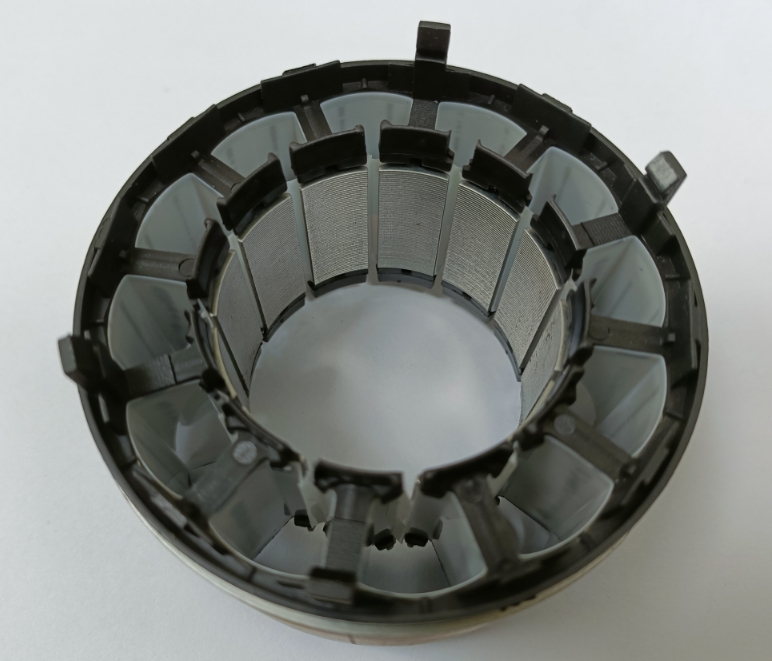Brushless motor motor automatic stator press end plate machine what are the common mechanical failure and solution
Brushless motor motor automatic stator press end plate machine common mechanical failures and solutions are as follows:
1、Insufficient or unstable pressure of end plate pressing
Failure causes
Hydraulic system problems: insufficient hydraulic oil, oil pump failure, hydraulic valve clogging or damage, resulting in failure to provide sufficient pressure or pressure fluctuations.
Wear and tear of mechanical transmission components: such as screws, nuts, gears and other transmission components wear, so that the power transmission is not smooth, affecting the pressure output.
Failure of pressure regulating device: Failure of pressure sensor, damage to regulator, unable to accurately regulate and control pressure.
Solution
Check the hydraulic system: replenish the hydraulic oil, check the working condition of the oil pump, repair or replace it in time if there is any failure; clean or replace the clogged or damaged hydraulic valve.
Replace worn parts: Replace worn screws, nuts, gears, etc. to ensure transmission accuracy and efficiency.
Overhaul pressure regulator: calibrate or replace the pressure sensor, repair or replace the regulator to ensure accurate and stable pressure regulation.

2、End plate pressure deviation or uneven pressure
Failure causes
Inaccurate positioning device: the positioning fixture of the stator or end plate is loose, worn or inaccurately installed, resulting in the end plate shifting position during pressing.
Wear or deformation of the press head: wear and deformation of the press head after long-term use, making the pressure distribution uneven, resulting in uneven pressing of the end plate.
Problems of mold precision: Insufficient precision of mold manufacturing or damage or deformation in the process of using, affecting the quality of end plate pressing.
Solution
Adjust the positioning device: tighten the positioning fixture, replace the worn parts and recalibrate the positioning accuracy to ensure that the position of the stator and end plate is accurate before pressing.
Repair or replace the indenter: Repair or replace the worn or deformed indenter to ensure good contact between the indenter and the end plate and even distribution of pressure.
Repair or replace the mold: Repair or replace the mold with insufficient precision or damaged and deformed, inspect and maintain the mold regularly to ensure the quality of the mold.
3、Feeding mechanism failure
Failure causes
Conveyor belt deflection: Uneven tension of conveyor belt, non-parallel installation of roller or uneven wear on the surface of roller will cause the conveyor belt to deflect and affect the feeding precision.
Feeding motor failure: feeding motor burnt, motor reducer failure, so that feeding power is not enough or feeding speed is not stable.
Silo blockage: irregular shape of material, high humidity of material or unreasonable design of silo, resulting in material blockage in the silo, unable to feed normally.
Solution
Adjust the conveyor belt: Adjust the tension of the conveyor belt so that the tension on both sides is even; calibrate the installation position of the rollers to ensure that the rollers are parallel; repair or replace the worn out rollers.
Inspection and maintenance of feeding motor: check the feeding motor and reducer, repair or replace the burnt motor and damaged reducer to ensure stable feeding power.
Unclogging the material bin: screen and organize the irregularly shaped materials, control the humidity of materials; improve the design of the material bin, increase the vibration device or unclogging device to prevent the material from clogging.
4、Abnormal noise and vibration when the equipment is running.
Failure causes
Damaged bearings: After long-term use, the bearings of each rotating part of the equipment are damaged due to wear and tear, lack of oil and other reasons, resulting in abnormal noise and vibration.
Loose parts: the connecting bolts and nuts of the equipment are loose, or some parts are not firmly installed, resulting in vibration and noise during operation.
Mechanical parts imbalance: such as pressure head, conveyor belt roller and other rotating parts in the manufacturing or use of the process of imbalance, causing equipment vibration.
Solution
Replacement of bearings: Regularly check the status of bearings, replace damaged bearings in time, and replenish grease regularly.
Tighten the parts: Tighten all the connecting bolts and nuts of the equipment, and check and reinforce the parts that are not firmly installed.
Perform dynamic balance correction: Perform dynamic balance test and correction on unbalanced rotating parts to ensure smooth operation of the equipment.
※ If you still can't solve the problem by the above ways and means, please contact the technical specialist of Xinhui Mechanical & Electrical Equipment Co.







